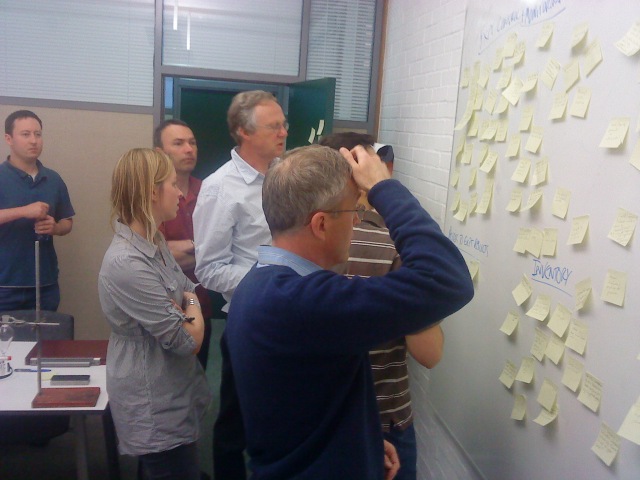The goal for the Ami project is to develop “a prototype of a natural user interface system that allows bench scientists to interact with their experimental information at the fumehood, using innovative modes of communication appropriate to the lab setting, focussing on voice recognition, touch-screens and laser keyboards” (from the project proposal).
The project held a brainstorming session with chemists from the department. The scientists were asked to think of ways that computing could facilitate their activities while they are working at their fumehood or bench. 130 ideas were generated, which when grouped fell into seven categories (Planning, Access to literature, Experiment control and monitoring, Collecting experimental results, Write-up and publication, Inventory, and Social). Perhaps not surprisingly, the two biggest groups were around monitoring the experiment and collecting the results, together accounting for about half the total suggestions.
In a follow-up meeting with key scientists the suggestions were assessed, prioritized, and distilled. Out of this came a set of ideas that the project would work on, plus a re-statement of the project’s focus – to produce a compelling demonstration of how a chemist could work at their fumehood.
Four areas of activity were defined:
- Natural Language Processing (NLP) interfaces
- Working at the fumehood
- Monitoring experiments
- What could be – lab of the future
A scientist at a fumehood often has their hands full, handling chemicals, weighing stuff out, adjusting equipment. Space is restricted, which makes it difficult to find a location for a computer. Often they are wearing gloves, so do not wish to use things such as a keyboard for fear of contamination. The ability to use speech to record observations and to control a computer display would be a significant help. The first two areas, NLP and Working at the fumehood, will explore possibilities in this area.
Perhaps surprisingly, a common requirement was simple collection of observational information from an experiment and storing it in an organised way. Examples were described where an experiment did something unexpected, creating the desire to “replay” the events to see if any mistakes were made. A simple log of things such as temperature, the reaction itself, and the environs of the fumehood was requested as a way to document and understand results.
Finally, in an effort to release our thinking from the constraints of the current environment, we decided to produce a mock-up of a chemistry lab of the future. Given the constraints of working with real-world buildings and budgets, we decided to do this as a virtual mock-up. We decided to do this in “Second Life” because it’s available to all and it provides facilities for developing new environments.

